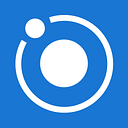How is the new remote Core Exam structured?
April 21, 2021
The new remote-format Core Exam from the American Board of Radiology (ABR) contains the same content and scope as before, with the convenience of at-home testing. But there’s a tiny bit more under the surface.
Blocks of 30 questions
You’ll answer questions in sets of 30 questions. You are required to commit your answers after each set of 30 questions. The exam will prompt you to confirm that you’d like to lock in your answers.
Once your answers are locked in, you cannot go back and change your answers. Although it’s probably a waste of time, you can read the questions and answers in a section that is locked.
Topics organized by block
Each block of 30 questions focuses on a single organ system — breast, neuro, body, etc. Some topics span two blocks, while other topics are represented by just one block.
Topics organized by day
If you finish an organ system on a given day, it is likely that you will not see that organ system again on another day. For example, if you saw a neuro block on day 2, you are unlikely to see a neuro block on day 3.
Physics on the remote Core Exam
Physics remains heavily represented on the remote Core Exam. Expect 15–30% of the exam to be physics, scattered throughout the blocks. Pick what works for you in terms of preparation. Most residents use Core Physics Review for intensive Core-focused radiology physics, including either the intensive online curriculum, four-day live review, or both.
— Orbit Staff
Related Articles
Ten-point checklist for the remote Core Exam, Orbit Staff
How is the new remote Core Exam graded?, Orbit Staff
